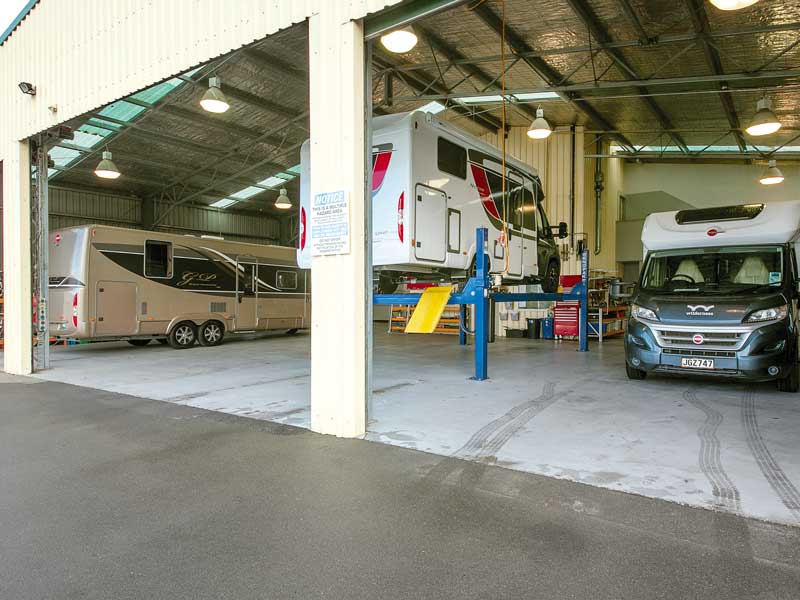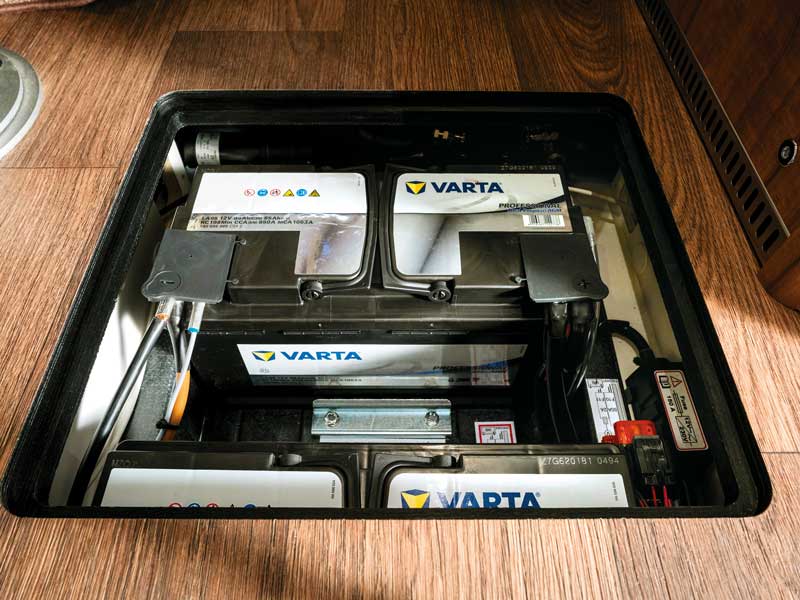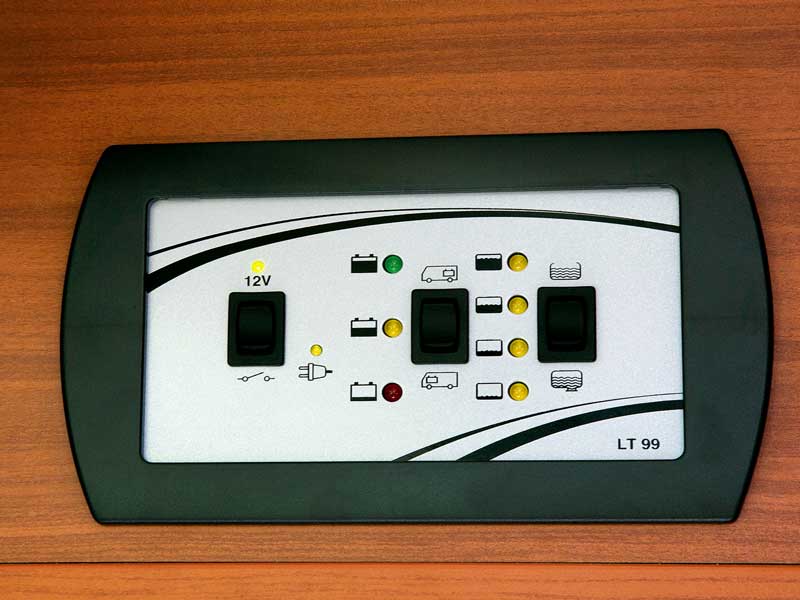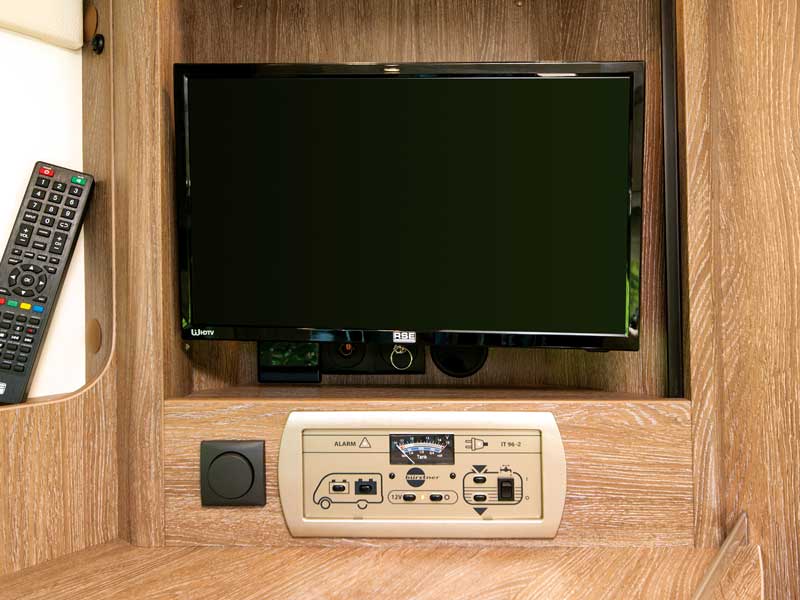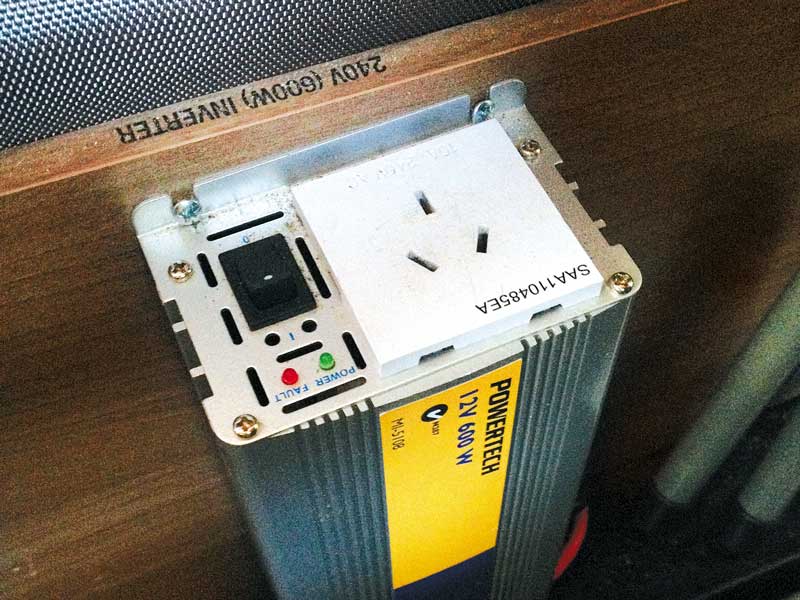Which devices in my RV are likely to use the most energy?
Most RV lighting is LED these days, and modern RV entertainment appliances are very energy efficient and won’t run your battery power low in a short timeframe. However, compressor fridges or 12V cooler boxes use a fair bit of energy, especially as you normally run them 24 hours a day while in use.
Inverters can also be hard on batteries because you lose energy in the process of converting from 12V to 230V, and a lot of appliances used with inverters consume a lot of energy such as electric kettles, toasters, and hair dryers. If you are using a lot of appliances all the time while freedom camping, or you are using a powerful inverter (1500-3000W), consider a battery and solar upgrade to avoid ruining your batteries in a very short period of time.
What is an inverter and how does it work?
An inverter transforms a direct current (DC) to an alternating current (AC). This allows you to use home appliances that run on 230V AC with your motorhome/caravan DC battery. It means you can have almost all the comforts from home within your mobile one.
There are three types of inverters—pure sine wave, modified sine wave, and square wave. Only the first two are used in RV applications. The advantage of the pure sine wave inverter is that the power output is much more stable, efficient and smoother. In particular, devices such as laptops should only be operated with pure sine wave inverters. Their only downside is that they are two to three times more expensive than modified sine wave or square wave inverters.
How often should I check my battery, and what do I need to check?
Before doing anything near your battery, it’s important to remember that batteries produce explosive gases, so be sure to keep sparks, flames, and cigarettes away at all times and ensure your eyes are protected.
One of the first things to check is whether you have a sealed battery (maintenance-free) or a ‘wet’ flooded lead acid battery that requires maintenance. The easiest way to tell the difference is that batteries requiring maintenance will have plastic screw caps on the top, which can be removed with a screwdriver. This gives you access to check the battery fluid level.
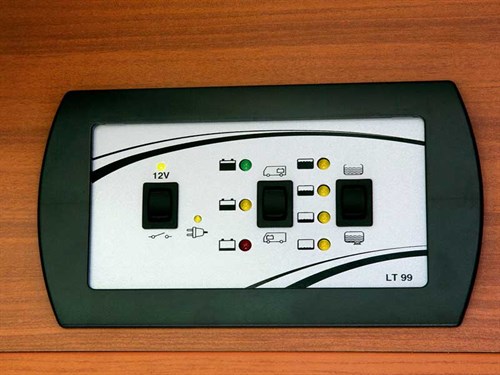
The maximum is usually indicated by a plastic indicator protruding above the fluid level. Ensure the plates are at least covered by water if you are unable to locate a level indicator. You should check the level once a month, as some of the acid water mix will evaporate and a small amount will electrolyse into hydrogen and oxygen. Never top up with battery acid or tap water, use distilled water only.
If you have any type of sealed battery, you don’t need to worry about the steps above as this type of battery cannot be opened.
Other things to check are that terminals and all wires are secure, the battery is not deformed, that wires don’t have any corrosion, and that the battery is properly secured.
How should I store my battery over winter?
Batteries don’t like long periods in cold conditions or without charge. If you know you are not going to use your vehicle for an extended period of time, you should connect it to an intelligent multistage charger. This will ensure the health of your battery over the winter by running various cycles of charging and discharging, all without overcharging the battery.
Spending a little more on the charger will save you money in the long term, as you won’t have to replace your batteries as often.
If you remove the battery out of the vehicle to charge it, be sure to leave it in a well-ventilated area such as your garage and avoid putting the battery directly on concrete flooring, as this will reduce the battery’s temperature.
How long will my battery last?
Well maintained batteries can last anywhere from four to seven years. It is not recommended to run your batteries below 12V as every discharge will shorten the life of your battery.
How do I check the charging system?
Some RVs and caravans come with a display that will give you a reading for ampere hour charge and discharge or battery voltage as a minimum.
You will see the voltage go up if on charge from 12–12.7V up to a maximum of 15–16V depending on the charger and the charge cycle it is running. If you can’t see the battery charging, try it on an alternative source such as running the engine or plugging into 230V and see if that method works. A common issue is that the 230V RCD may trip, these can be reset by flipping the fuse back up into the ‘on’ position. The RCDs look similar to the ones in your house. If you are unable to identify the issue, it’s best to talk to your trusted workshop.
What options do I have for powering my vehicle that won’t drain the battery?
First off, you can ensure all appliances and lighting are energy efficient and that you make use of thermostat settings in the fridge and heater.
Adding more battery capacity and solar power will give you more time to freedom camp. You can also add a diesel/petrol generator to your vehicle to recharge batteries and run appliances to extend your freedom camping capabilities, but be aware that these will be noisy.
Lastly, making frequent use of powered camp sites will also eliminate the problem and help you stay on the road for longer.

